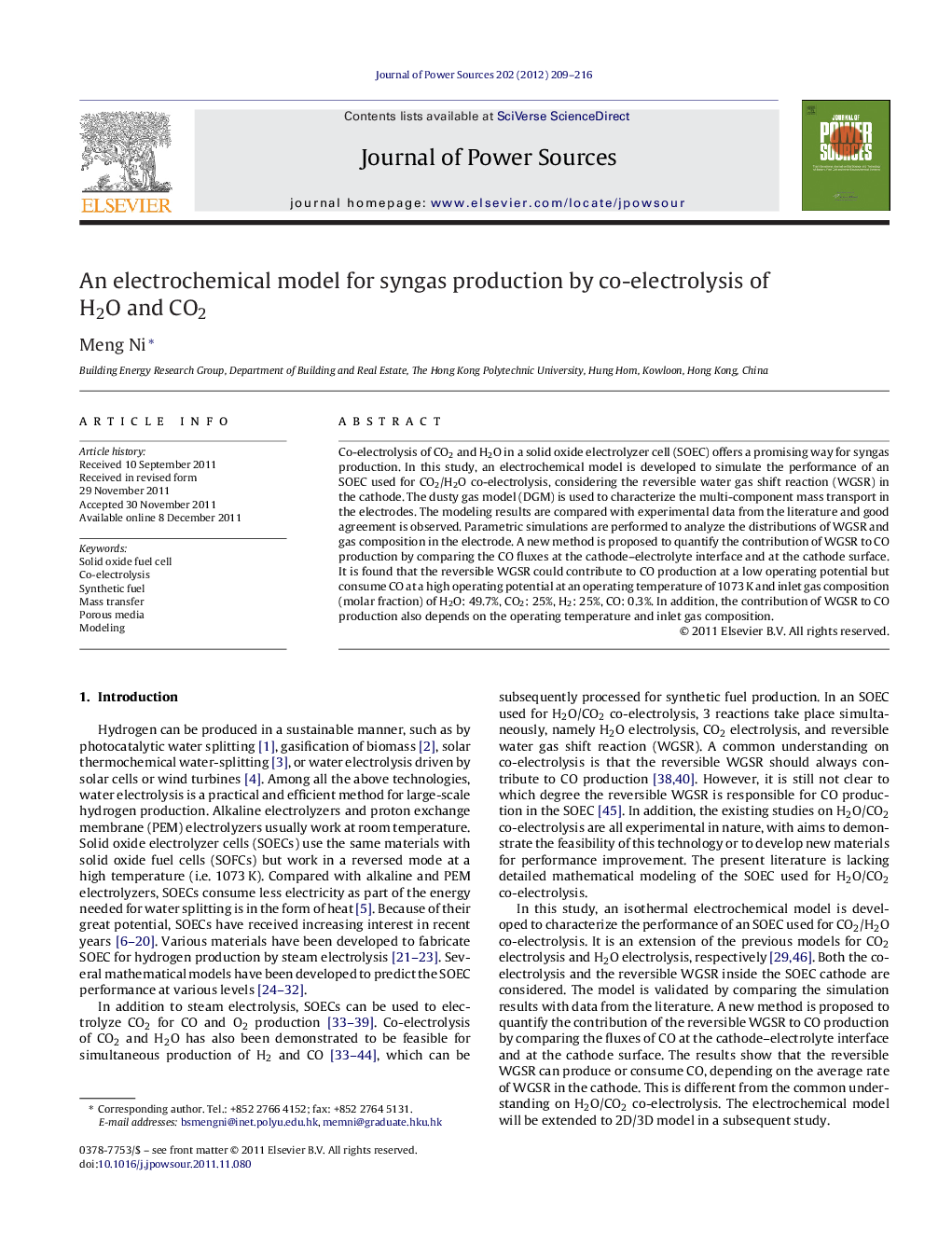| Article ID | Journal | Published Year | Pages | File Type |
|---|---|---|---|---|
| 1288560 | Journal of Power Sources | 2012 | 8 Pages |
Co-electrolysis of CO2 and H2O in a solid oxide electrolyzer cell (SOEC) offers a promising way for syngas production. In this study, an electrochemical model is developed to simulate the performance of an SOEC used for CO2/H2O co-electrolysis, considering the reversible water gas shift reaction (WGSR) in the cathode. The dusty gas model (DGM) is used to characterize the multi-component mass transport in the electrodes. The modeling results are compared with experimental data from the literature and good agreement is observed. Parametric simulations are performed to analyze the distributions of WGSR and gas composition in the electrode. A new method is proposed to quantify the contribution of WGSR to CO production by comparing the CO fluxes at the cathode–electrolyte interface and at the cathode surface. It is found that the reversible WGSR could contribute to CO production at a low operating potential but consume CO at a high operating potential at an operating temperature of 1073 K and inlet gas composition (molar fraction) of H2O: 49.7%, CO2: 25%, H2: 25%, CO: 0.3%. In addition, the contribution of WGSR to CO production also depends on the operating temperature and inlet gas composition.
► An electrochemical model is developed for H2O/CO2 co-electrolysis in an SOEC. ► Contributions of electrolysis and reversible WGSR to CO production are quantified. ► The common opinion that WGSR always contributes to CO production is invalid.
